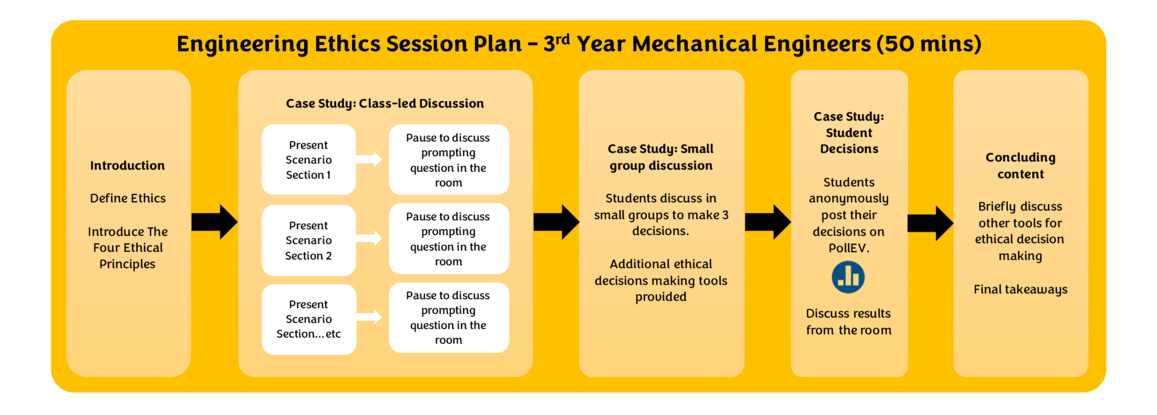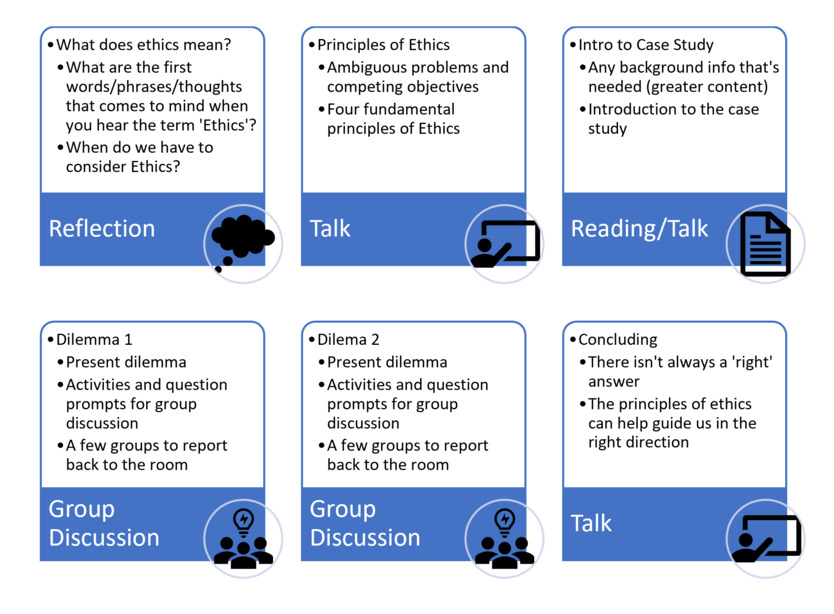Authors: Dr. Jude Bramton (University of Bristol); Elizabeth Robertson (University of Strathclyde); Sarah Jayne Hitt, Ph.D. SFHEA (NMITE, Edinburgh Napier University).
Keywords: Collaboration; Pedagogy.
Who is this article for?: This article should be read by educators at all levels in higher education who wish to integrate ethics into the engineering and design curriculum or module design.
How to organise class sessions:
Engineering educators can find a wealth of ethics case studies in the Engineering Ethics Toolkit. Each one focuses on different disciplines, different areas of ethics learning, and different professional situations, meaning there is almost certainly a case study that could be embedded in one of your classes.
Even so, it can be difficult to know how to organise the delivery of the session. Fortunately, Toolkit contributors Jude Bramton of the University of Bristol and Elizabeth Robertson of the University of Strathclyde have put together diagrams that demonstrate their approaches. These processes can act as helpful guides for you as you integrate an Ethics case study in one of your engineering class sessions.
Jude Bramton’s class session organisation looks like this:
You can read more about her approach here.
Elizabeth Robertson’s class session organisation looks like this:
You can read more about her approach here.
This work is licensed under a Creative Commons Attribution-ShareAlike 4.0 International License.
Any views, thoughts, and opinions expressed herein are solely that of the author(s) and do not necessarily reflect the views, opinions, policies, or position of the Engineering Professors’ Council or the Toolkit sponsors and supporters.






